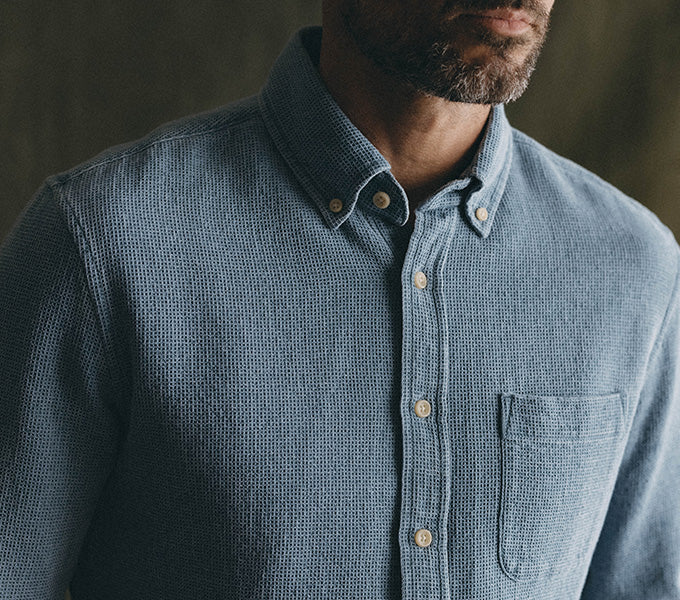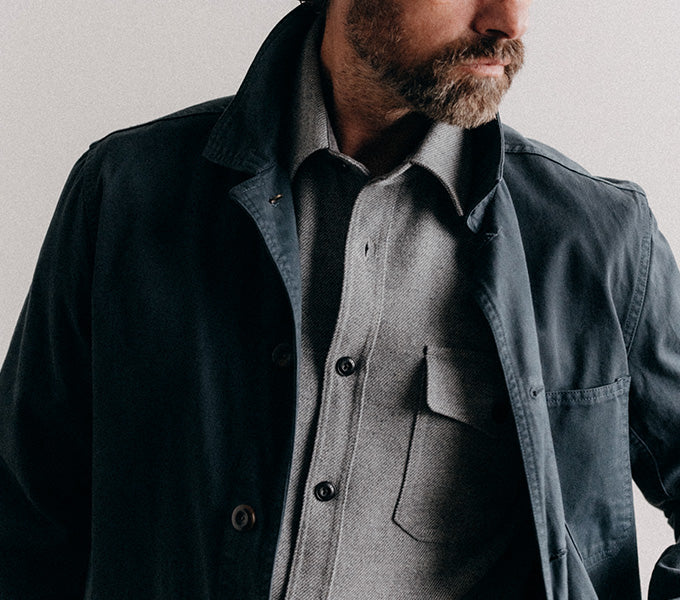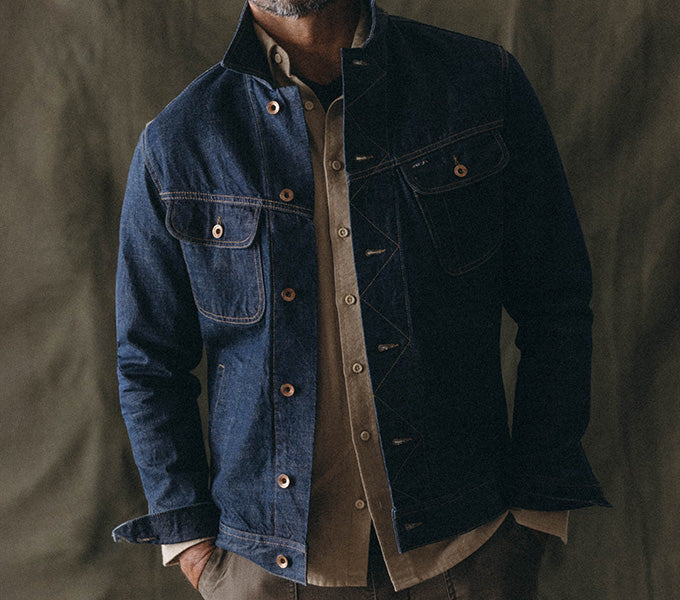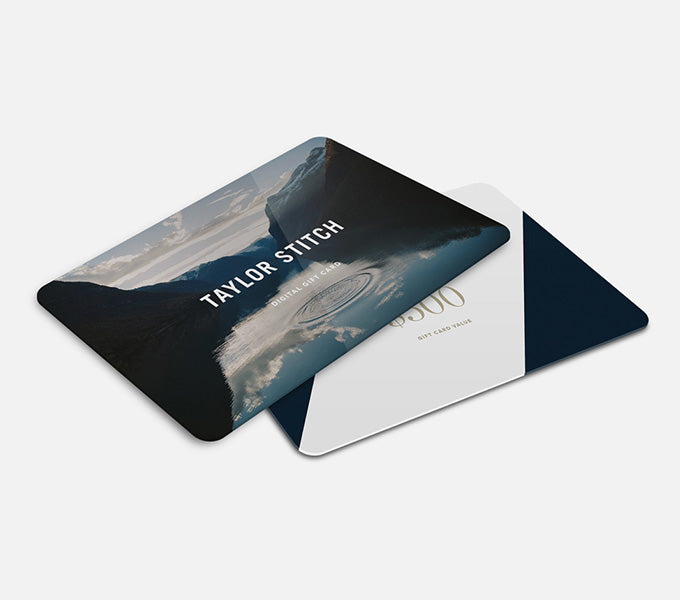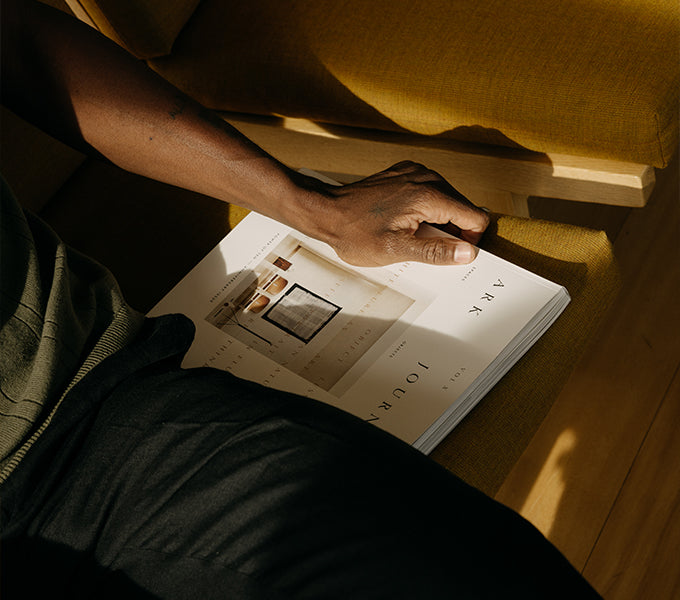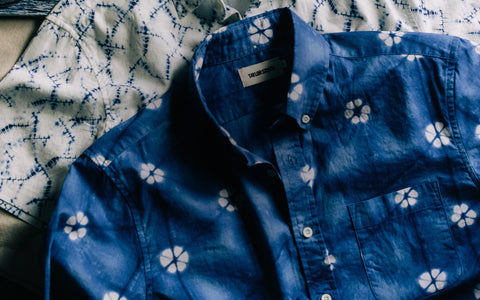A few years ago, we were fortunate enough to meet Brooklyn-based Shibori artist Teresa Misagal and work with her on a special collaboration capsule that quickly became one of our most popular collections to date. Now, with warmer weather on the way, we found ourselves itching to create some more stand-out Shibori shirting with Teresa, so we called her up and (luckily for us) she was game to go at it again.
After stumbling across a newfound passion when dyeing fabric to shade her granola stand at a local farmers market, Teresa dove head first into the deep, history rich rabbit hole of Shibori hand-dyeing. Several trips to Japan and countless projects later, her company Dailola (named after her pups, Dailo and Lola) was born. We sat down with Teresa to pick her brain about the artist’s life, her personal inspirations, and the ancient artform of Shibori.
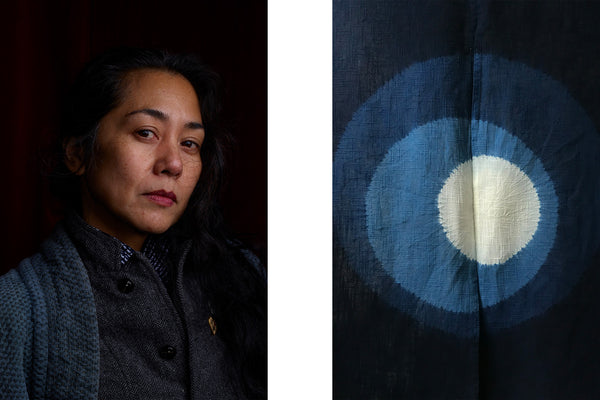
What was your first experience with the Shibori artform? Was it love at first sight?
Yes, absolutely! I had no idea what I was doing and had an opportunity to finally try and dye something, so I asked a Japanese friend whose mom had some experience with dyeing for help and got the material. We worked together on dyeing a huge piece of fabric with a mishmash of different techniques, and the process was so interesting. When I finally unveiled the piece and removed all the rubber bands, I thought: Dang, this is awesome. I need to do more of this! I loved it and hung it up and that’s where it all started—from the one piece of fabric that I attempted to dye.

For those of us who might not fully understand the distinction between Shibori and something like tie-dye, could you elaborate on what defines the artform?
Tie dye is a distant cousin to Shibori. Shibori is actually what inspired tie dye, but in our fast paced world today, tie dye is a quicker way to create patterns. To me, Shibori is pattern with intent. You’re using different techniques and you plan it out in advance. It’s not a happy mistake—though of course, there can be some! It’s putting your head down, diving in, laying it all out and drawing all your threads together before the dye vat. There’ve been pieces where I took up to a month to prepare… Shibori takes a lot of thought and process—it doesn’t take an hour to make.
Are there any current/recent projects that you’re particularly excited about?
I recently worked on the design concept for Ueki, an Omakase restaurant by the Blue Ribbon group in the West Village. The restaurant is honoring a chef that I knew and worked with for many years, Toshi Ueki, and I was asked to design the concept of the space to convey how our dear friend would have wanted to make people feel when they’re sitting at his sushi counter.
In the big picture, I’m always excited about my work being out in the world. Not only can you wear it on your body, you can have it any way in your life that you see fit—up on the wall, in a window, on the table.That’s what I love so much about doing different projects, looking at functional textiles and how we can bring them into our daily life.
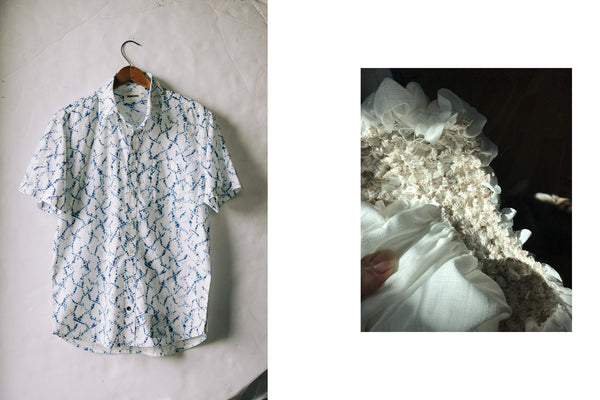
You’ve been mastering the art for quite a long time now, do you feel that there is always more to learn? Is there anything you learned recently that has reinvigorated your process?
I always feel that there’s something more to learn—in life in general and in Shibori. Mainly because there are so many different techniques you can use to make patterns, so it’s impossible to master. I started when I was well into my adult life, and I just want to keep learning new techniques and practicing those same techniques. You learn something new every time you practice.
I went away recently to Japan, which is always exciting as that’s where I get to see things that inspire me and come up with new ideas. You can see things there that you don’t really get to see here—different fabrics, their history, etc. I can’t wait to try and make more stuff using my trip as inspiration.
What was your experience like on your first trip to Japan to study Shibori?
My first trip was amazing. One because I was in the mountains and countryside, which felt truly sublime. You’re working in a beautiful setting with no distractions and you can fully immerse yourself. Even though I don’t think I did my best work, it was awesome because we were just so excited about making things and trying to make as much as we could, we barely slept. It was such a great experience that I had to go back again to do another workshop—and after that trip is when I decided that I wanted to spend a lot more time in Japan to keep learning.


Shibori seems like an artform untouched by time, still largely relying on one's own hands and some simple tools to achieve. In what ways does the hands-on nature of the process inform your finished work?
What I love about Shibori is that you can always see the hand of the maker. When I look at a finished piece, it’s not just about the stitch work, it’s looking to see how well someone has dyed something. You can see the care, intention and patience they had when they were dyeing the work. How even the indigo is, to what depth the work was dyed, and how many times it was immersed. I have been and can be an impatient person, but dyeing has been a teacher to me on how to be patient. How patient can I be with the process? How well am I manipulating the fabric and adjusting it? That’s what I hope comes through when looking at my work: everything I’ve learned from my teacher of patience—Shibori.
We’re so grateful for the opportunity to work with world-class artists like Teresa. Not only has she enriched our roster with her artwork, she’s refreshed our appreciation for the artistic foundations of our own process.


